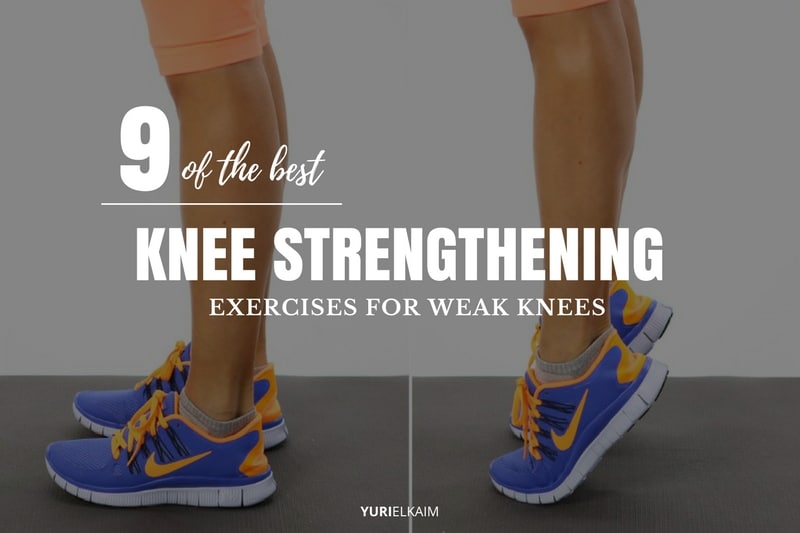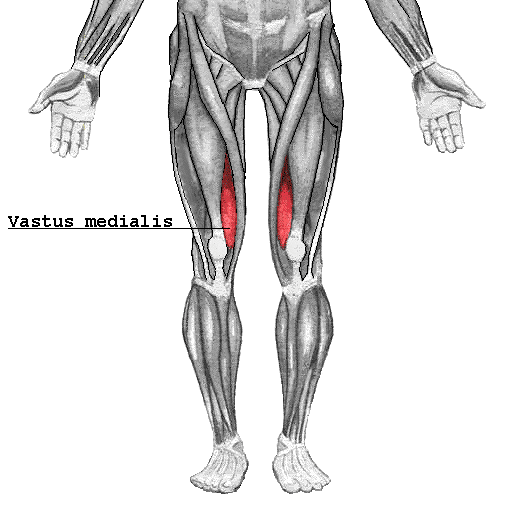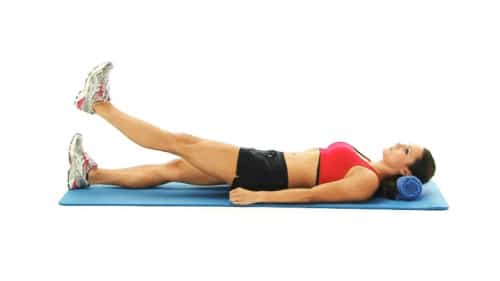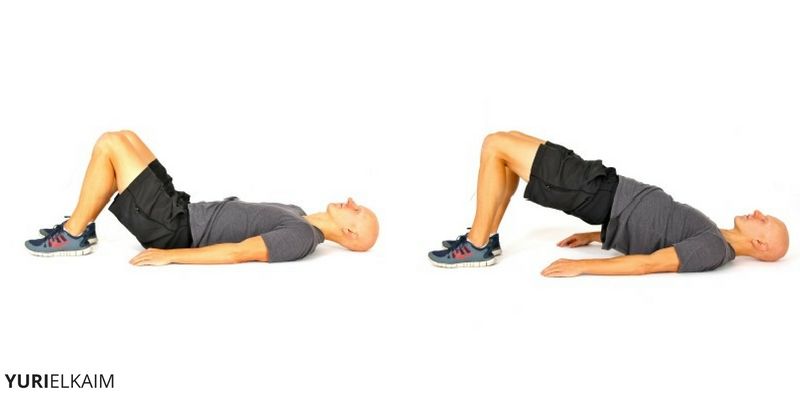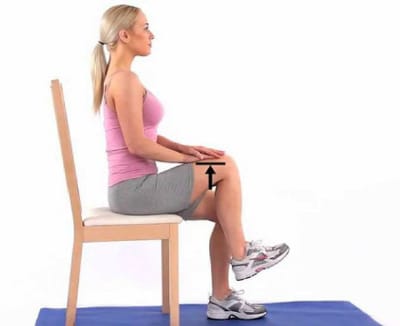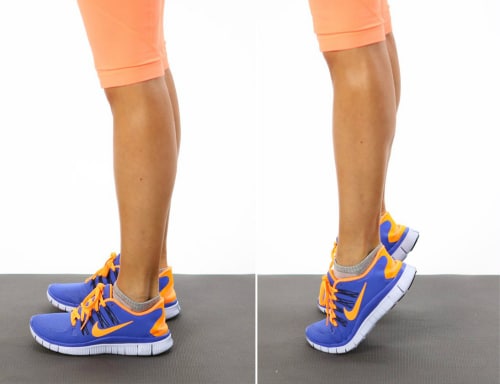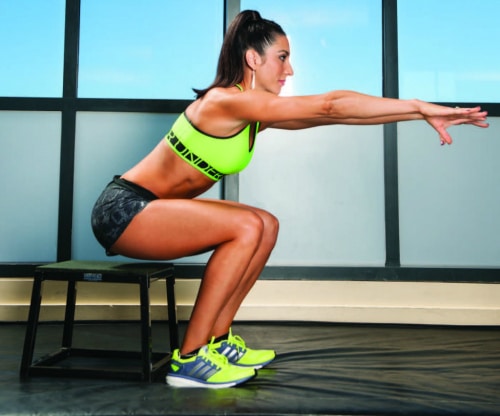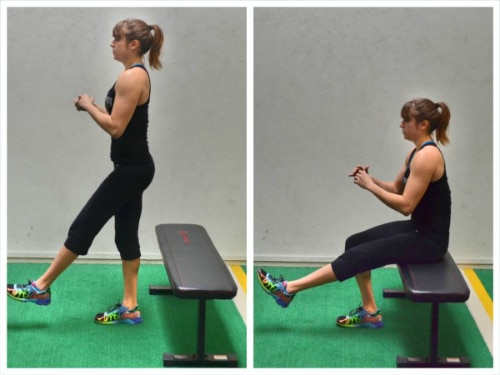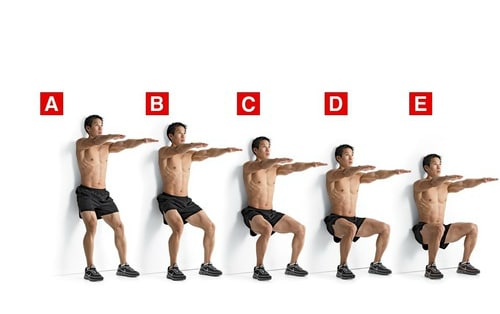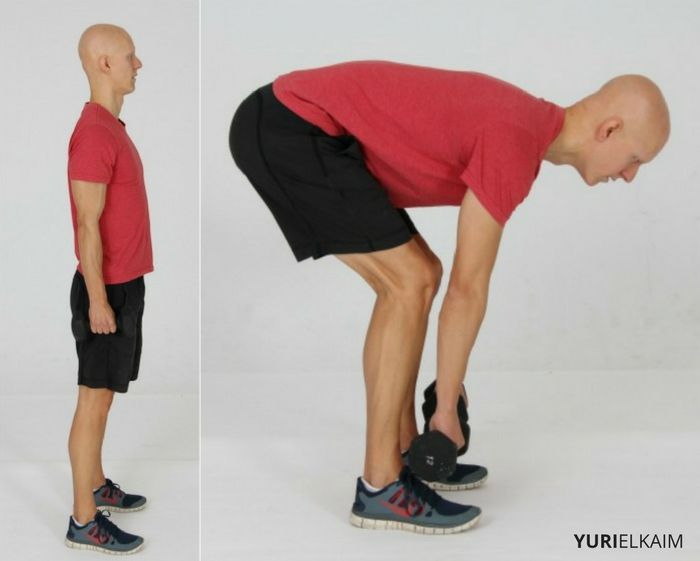Do These 9 Exercises to Strengthen Weak Knees
There are certain situations where it’s okay to be weak in the knees.
Like, say, on Valentine’s Day. Or your wedding day.
But during your workouts? That’s never okay.
This is because having weak knees is an injury waiting to happen. It may not occur instantly, but know that if your knees aren’t supported correctly during your training, the excess strain you’re putting on them will eventually cause you pain.
And since we don’t like pain unless it’s some good old-fashioned muscle soreness from a great workout, I’m here to help you avoid it with nine powerhouse knee-strengthening exercises.
Now, before we get into these exercises to strengthen knees, let’s take a look at what actually causes weak knees in the first place, so we can understand how these exercises are working for us.
What Causes Weak Knees
Weak Quadriceps
The quads and, most importantly, the vastus medialis obliques (VMO for short), are the muscles that run along the front and side of the leg and attach to the knee.
These are super important for keeping the knee straight and absorbing shock from running and other weight-bearing activities. A weakness here will lead to an unstable knee and increased pressure on the knee joint – a big “ouch” factor!
When it comes to exercises to strengthen knees, working the quads and VMO are key.
Weak Glutes
While you might be shaking your head and thinking, “What does my butt have to do with my knees?” the importance of the glute-knee connection may surprise you.
You see, the glute muscles are key players in hip adduction and abduction (rotating your hips and legs inward and outward). Since they create this movement, they’re also able to resist it when necessary. Say, for example, when you’re jogging – the last thing you want is your hips and knees rotating the wrong way at the wrong time.
This is exactly what happens when you have weak glutes. And most of us have weak glutes because we sit so much and don’t activate our glutes properly.
As a result, our knees are not supported by the glute muscles during exercise, which can lead to improper foot landing and rotations. In turn, you get a ton of shock and pressure on your knee joints instead of your glute muscles, where it could be absorbed efficiently.
Lesson: give your booty the attention it deserves!
Recommended Reading:
Weak Calves
While the glutes and quads are keeping your knees in line, the calves are acting as their bottom-supporter.
Weakness (or tightness) in the calf muscles takes away this shock absorber, letting the knee take the brunt impact of any type of weight-bearing exercise. So when it comes to exercises to strengthen the knees, be sure to include the calves in the mix.
9 Best Exercises to Strengthen Knees
The following exercises will focus on strengthening these knee-supporting muscles so you can take pressure off your knee joints and make sure they’re aligning properly.
Try to perform these exercises every other day (or even every day if you have the time) for the best results.
1. Straight Leg Raises
Straight leg raises help you work the front of your quadriceps, without having to bend your knees. They are especially great for when any type of bending or load on your knees is bothering you.
The reason you want to strengthen the quadriceps muscle is because it helps absorb shock before it reaches the knee joint. This will lessen the strain on your knees and help reduce pain and friction.
- Begin lying flat on your back, one leg bent with the other extended straight in front of you, along the floor.
- Flex your foot and pull your toes toward you, keeping your knee straight.
- Lift your foot roughly six inches off the floor, hold for 3-5 seconds, then lower.
- Repeat for 10 to 20 reps.
Progression: Once your knees feel stronger, you can try adding weight in the form of a shoe or ankle weight.
2. Glute Bridges
The glute bridge is an amazing exercise that works the entire lower half of the body, including the core. Strengthening the glutes, hamstrings, quads, and core all help to relieve pressure off the knee joints, and improve knee stabilization during your workouts.
- Begin lying on the floor with your legs bent and feet in line with your hips.
- Engaging your glutes, lift your butt toward the sky and hold for a beat. Avoid arching your back.
- Lower to just above the floor and repeat for 10 to 15 reps.
Progression: Once you’re easily doing standard bridges with no knee pain or weakness, try out single-leg bridges by extending one leg out in front of you as you raise and lower.
3. Knee Marches
Knee marches are similar to straight leg raises, only less strenuous. They focus on strengthening the quad muscles without putting downward pressure on the knee.
- Grab a chair and sit tall with your feet on the floor. Holding on to the edge of the chair (or on top of lifting knee), lift one leg up toward your chest (keep the knee bent).
- Lower and switch sides, alternating for 20 to 30 reps.
Progression: You can make these more difficult by adding an ankle weight or shoe.
4. Clams
Clams help strengthen the glutes, which is really important when it comes to removing excess pressure from the knees. When your glute muscles are weak, a heavier load is taken on by your leg muscles and knee joints, which can lead to strain and pain.
- Begin lying on your side, propping your head up with your arm.
- Bend your hips at 45 degrees and your knees at 90 degrees, resting one leg on top of the other.
- Now lift your top leg, keeping your toes together. You should feel you glutes engage.
- Repeat for 10 to 15 reps on each leg.
5. Heel Raises
While clams and other glute exercises help support the knees from the top, calf exercises like the heel raise helps support the knees from the bottom. In this way, we end up with a “cushion” of muscle surrounding the knees, aiding in their mobility and strength.
Heel raises also help strengthen the stabilizer muscles surrounding the knee due to the balance required to raise up on the balls of your feet.
- Stand tall with your feet shoulder width apart (you can lightly touch a wall or chair for balance).
- Rise up onto the balls of your feet, avoiding leaning forward.
- Hold for 1 to 2 seconds, then lower. Repeat of 10 to 20 reps.
6. Sit-to-Stand
The sit-to-stand is essentially an assisted squat (assisted by a chair, which keeps you from putting too much pressure on weak knees). It works the entire lower body as well as the stabilizer muscles running from the glutes down to your toes, bolstering your knees against shock and strain.
- Begin sitting in a stable chair, feet flat on the floor.
- To stand, engage your glutes and core and push forward and up (you don’t have to explode up or move fast – a normal speed will do).
- Return to sitting by placing your weight in your heels and engaging your glutes once more.
- Repeat for 10 to 15 reps.
Progression: You can make this harder by using a lower chair, or by adding some weight in the form of hand weights, or even a backpack. Eventually, you can move on to standard squats.
7. Single-Leg Squat onto Bench
Single-leg dips work your thighs, calves, glutes, and hamstrings, all while challenging your stability muscles to help you keep your balance. This cradles the knee joint in a supportive system of muscle, increasing mobility and strength.
- Grab yourself two stable chairs and stand between their backs.
- Rest one hand on each back to help you balance, then extend one leg out in front of you.
- Keeping your weight in the heel of your standing leg, slowly lower a few inches.
- Raise to standing, then repeat for 10 to 15 reps on each leg.
Note: Remember to gently touch the backs of the chairs, instead of gripping them. You’ll see the most benefits here when you use as much of your natural balance as possible.
8. Wall Squats
Wall squats are excellent for getting in the booty benefits of the squat while building up your knee strength to perform regular squats. Here, your back is supported by the wall and your knees remain static as you work the surrounding muscles in the thighs, glutes, and quadriceps.
Again, these stabilizer muscles will help keep your knee joints strain free, since they absorb impact and pressure during your workouts.
- Begin standing against a wall or other flat surface.
- Step your feet out, hip-width apart, roughly two feet in front of you.
- Slide your butt down until your hips are parallel with your knees.
- Hold for 20 to 30 seconds and repeat 2 to 3 times.
Note: In this exercise, don’t slide down below your knees or let your knees come over your toes. This will actually end up putting more strain on your knee joints.
9. Deadlifts
The deadlift is one of the best ways to strengthen your posterior chain, which includes all of the muscles running down your backside. Since this includes the glutes and hamstrings which help straighten and stabilize the knee joints, deadlifts are an excellent exercise to add to your knee-strengthening routine.
- Begin standing tall, holding a light pair of dumbbells at your hips. Your knees should be just slightly bent.
- Now, bend forward, keeping the dumbbells in front of your hips. Push you hips back as you do this, avoiding letting your shoulders round forward.
- Once you’ve lowered just below your knees, engage your gluten and hamstrings and return to standing.
- Repeat for 10 to 15 reps.
Progression: Gradually try adding more weight to your deadlifts. Eventually, you’ll be able to progress to using a barbell, rather than dumbbells.
Take it Slow
Just a reminder: these exercises to strengthen knees and the related muscles should be challenging – but they shouldn’t be painful.
Only move into the progressions when you can do so confidently and pain-free, otherwise you could risk being benched from the gym for far longer than the time it would have taken you to be patient with your knee strength.
With that being said, strengthening your knees will have carry over benefits as well, helping you run with better posture and even improve your squat form and glute activation.
In short, you won’t regret it.
Get Stronger Using Your Own Body
As you can see from the exercises to strengthen knees above, you don’t need a lot of fancy equipment in order to get fitter. Sometimes all you need is your own body.
That’s why I created this downloadable Bodyweight Workout!
This 6-exercise circuit will help you burn more fat while getting stronger. It includes an instructional video, workout tracker, and follow-along audio.
A $29 value – it’s yours FREE! Just click the image below to get it now.

